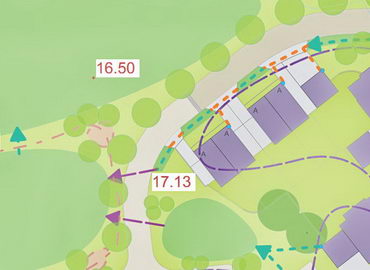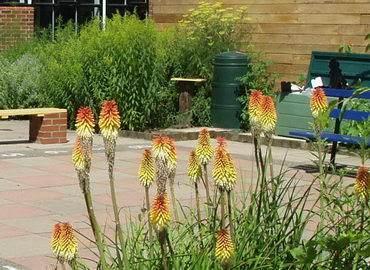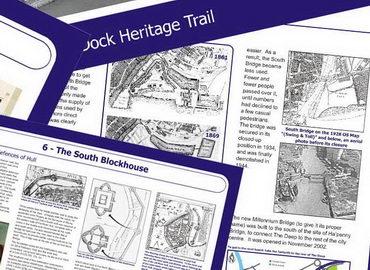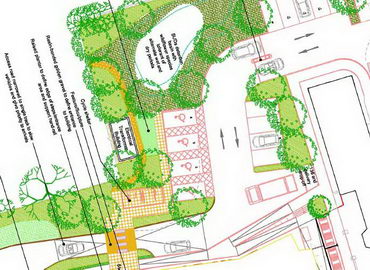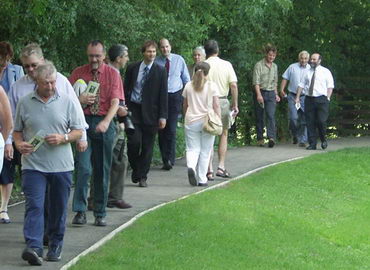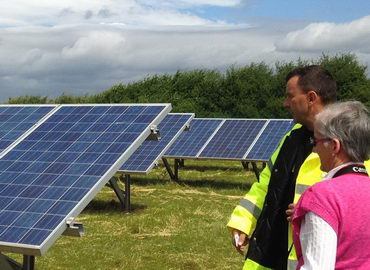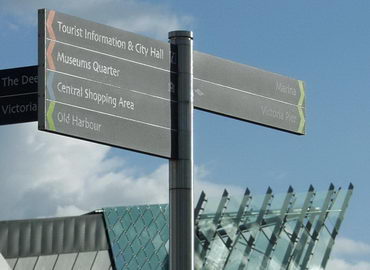What is Natural Flood Management (NFM)?
Natural Flood Management (NFM) takes inspiration from nature, to reduce flood risk through designed interventions and landscape management. NFM generally refers to measures that take place at a wider (landscape or catchment) scale, usually in rural settings. By contrast, Sustainable Drainage Systems (SuDS) operate on similar principles but are often deployed at site level.
NFM brings with it additional Green Infrastructure (GI) benefits, such as biodiversity, amenity, air and water quality, which do not occur with 'traditional' high-carbon, hard engineering solutions. NFM can complement hard solutions by reducing flood peaks and effectively adding to their capacity.
NFM is a subset of the broader term, Working with Natural Processes (WWNP).
Benefits of NFM
Rain water can be slowed, and flooding reduced, through catchment-scale land management, starting high up in the catchment and following the natural path of water, across fields and through watercourses. Traditional, reactive, flood defence measures, which constrain water in-bank, tend to push the problem downstream.
As Landscape Architects, we work with other professionals, including engineers and ecologists, to integrate NFM within a functional landscape. From concept NFM master planning, to detailed layout and implementation, good NFM design provides opportunities to:-
- create attractive and low-cost flood management approaches with reduced capital and long-term management costs, as NFM development and maintenance can often be integrated with ongoing land management;
- substantially improve biodiversity through habitat creation - which also helps with things like BREEAM ratings, acheiving 10% Biodiversity Net Gain (BNG), and obtaining funding, e.g. through the forthcoming ELM scheme;
- provide other social, economic and health benefits, through the integration of Green Infrastructure and creation of attractive, uplifting places.
Typical NFM interventions
NFM measures could be stand-alone, or part of a suite of interventions on a larger site / at a catchment scale. They may include:
- run-off pathway techniques (such as swales and ponds);
- offline storage areas (large temporary flood storage basins);
- leaky dams;
- headwater drainage (e.g. diverting flow paths to intercept, slow and filter surface water);
- woodland planting;
- soil management to increase organic content;
- river and floodplain restoration.
Water is handled cleanly and safely - in a landscape that mimics a natural environment, but is designed by landscape architects for aesthetics, amenity and nature.
Why 2B?
As Chartered Landscape Architects, 2B bring a unique perspective to NFM design. Our team has an awareness of environmental issues and legislation, alongside an eye for the aesthetic, a grasp of the 'big picture', and attention to detail, that makes us an invaluable member of your design team from project start to finish.
2B team members have personal experience of flooding, and the devastation it causes. Our voluntary work includes establishing both Slow The Flow (Calderdale), and West Wolds Slow The Flow. This demonstrates our passion for, and in-depth understanding of, NFM issues and solutions.
Involve us ASAP!
We would be delighted to discuss your NFM needs. Do please get in touch - as early in your project as possible.
2B responded swiftly to our call for urgent design work and created a range of very high quality graphics and visualisation at short notice. Communication was excellent. They suggested interesting ideas that resulted in an enhanced end product. They know their stuff and are passionate about what they do, which made working with the 2B team a really great experience.




